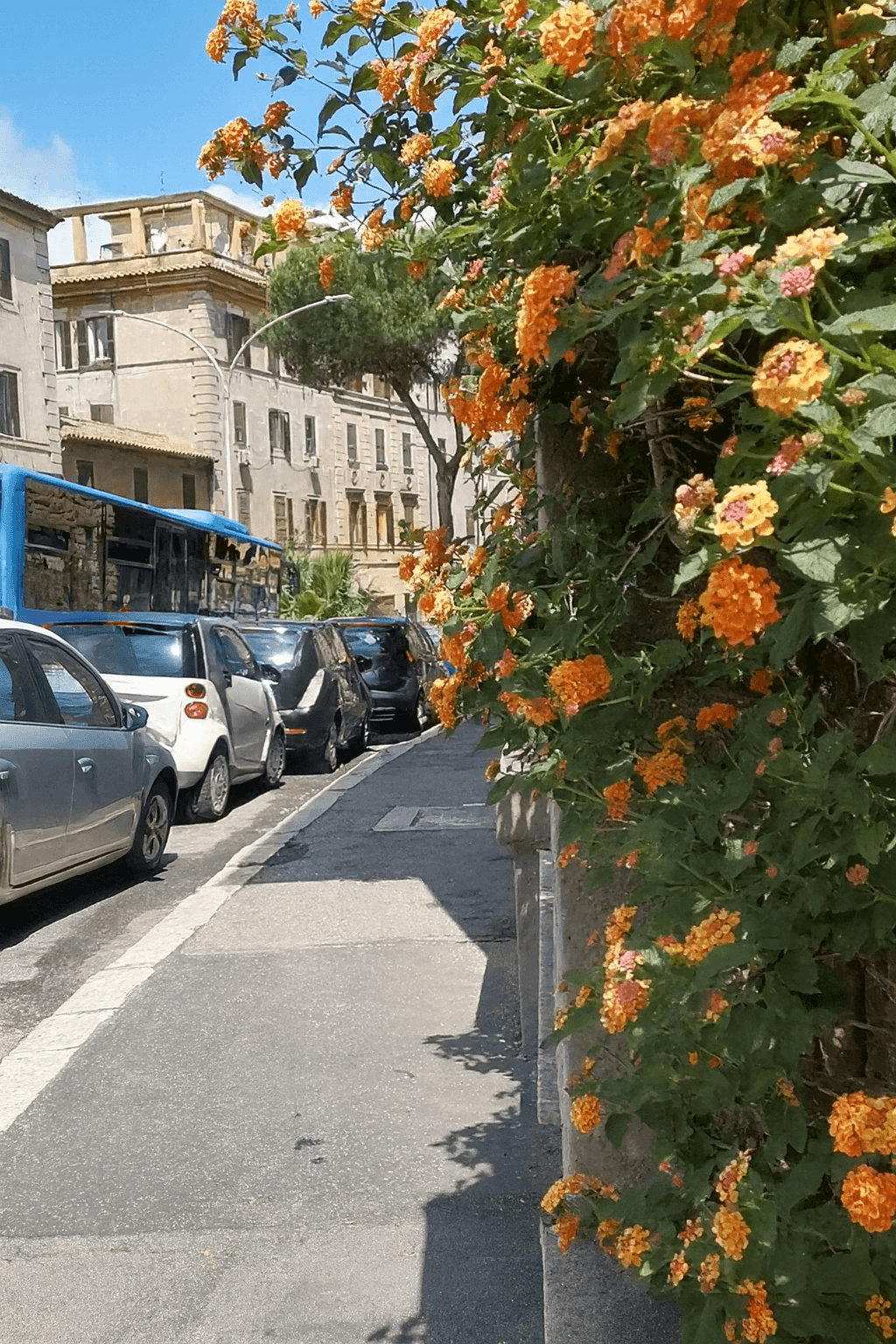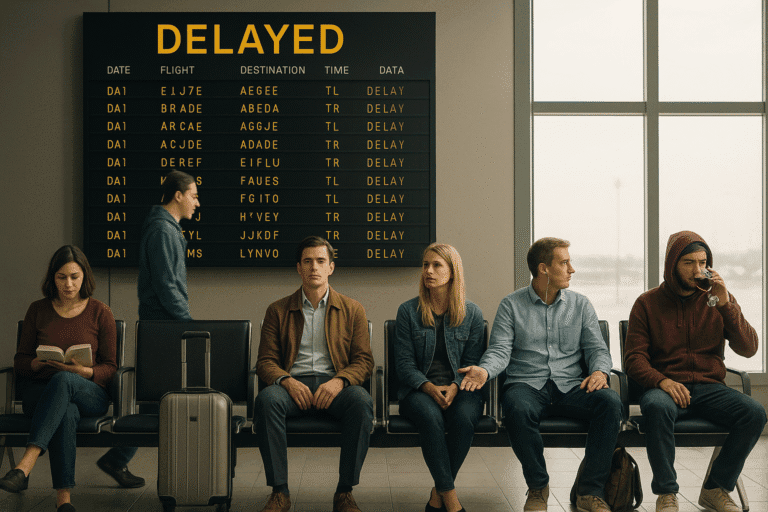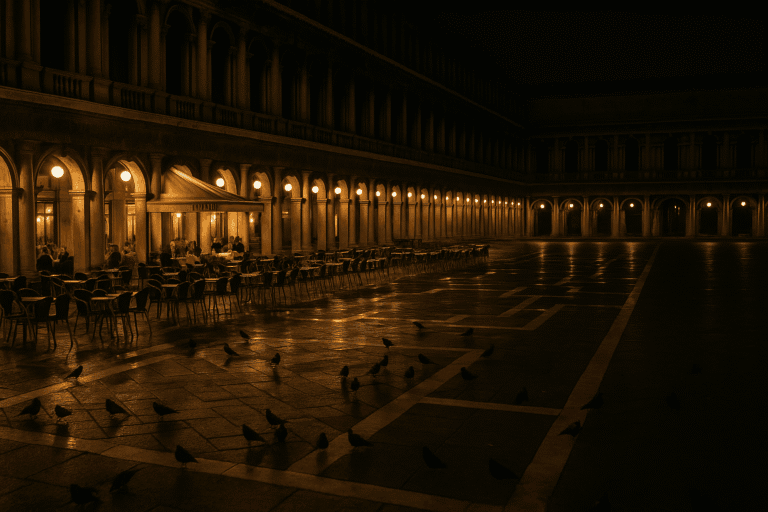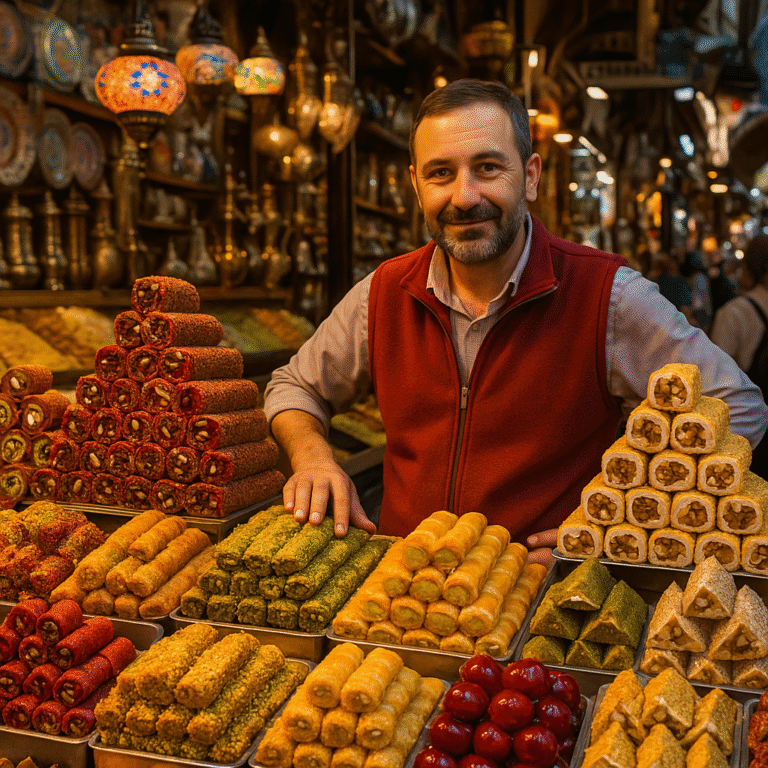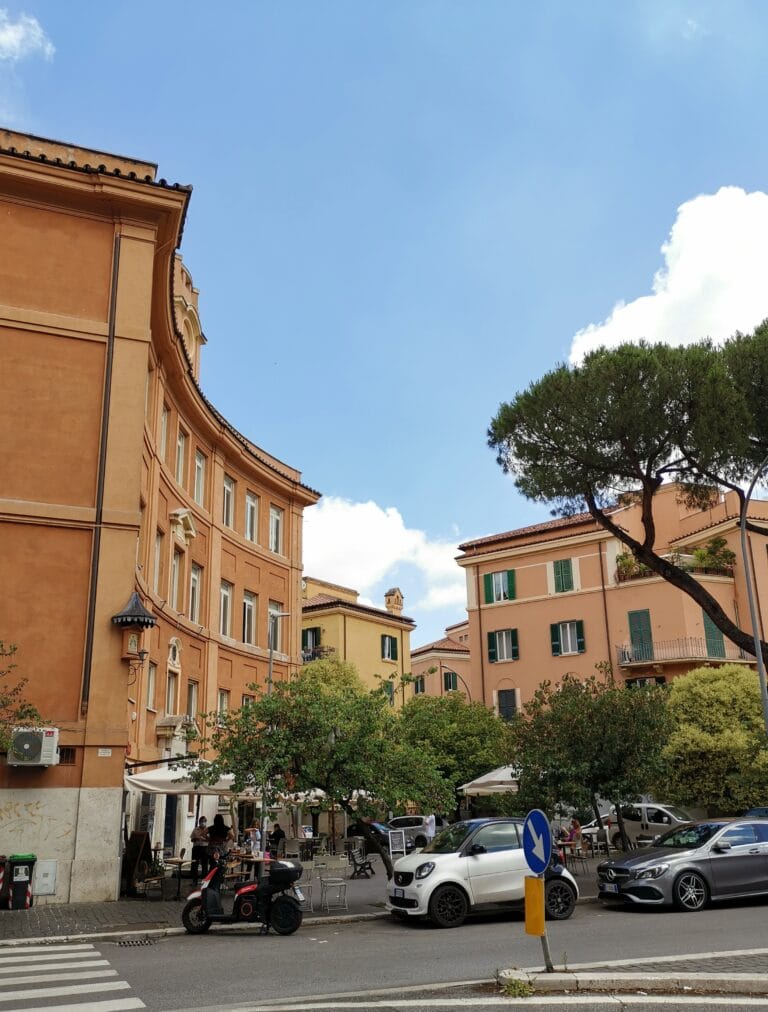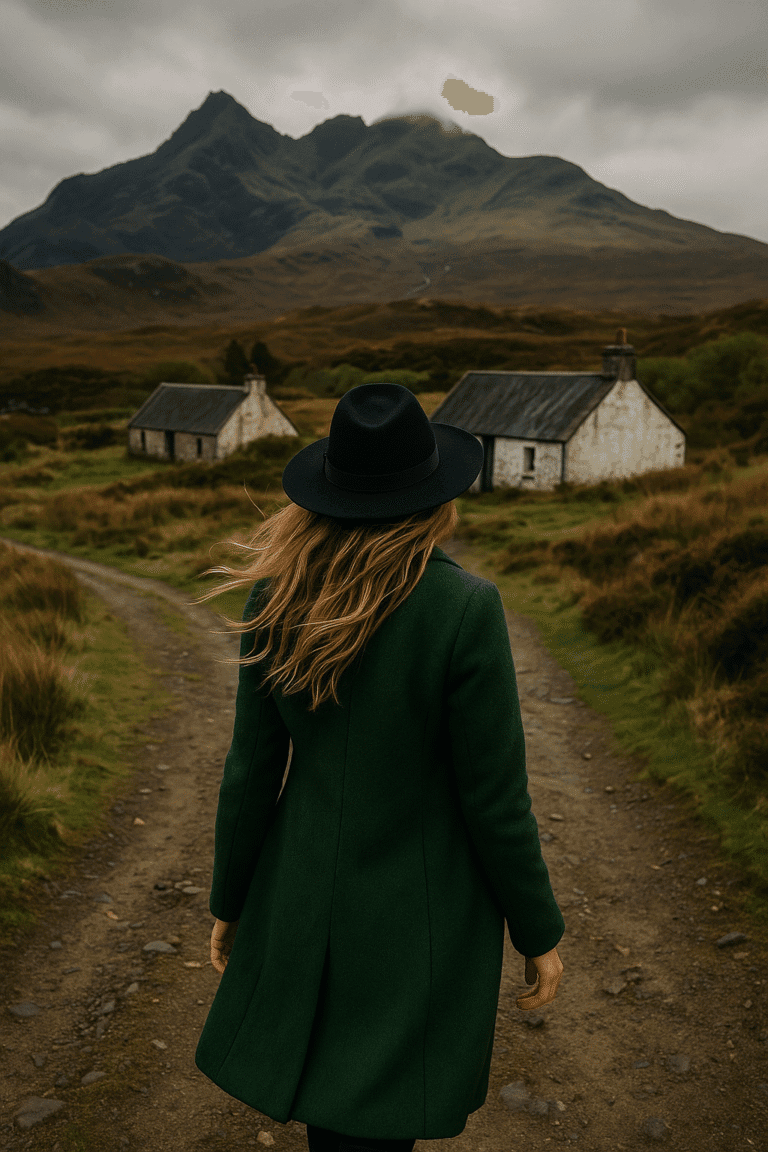The Popular Soul of Rome: Stories from Garbatella
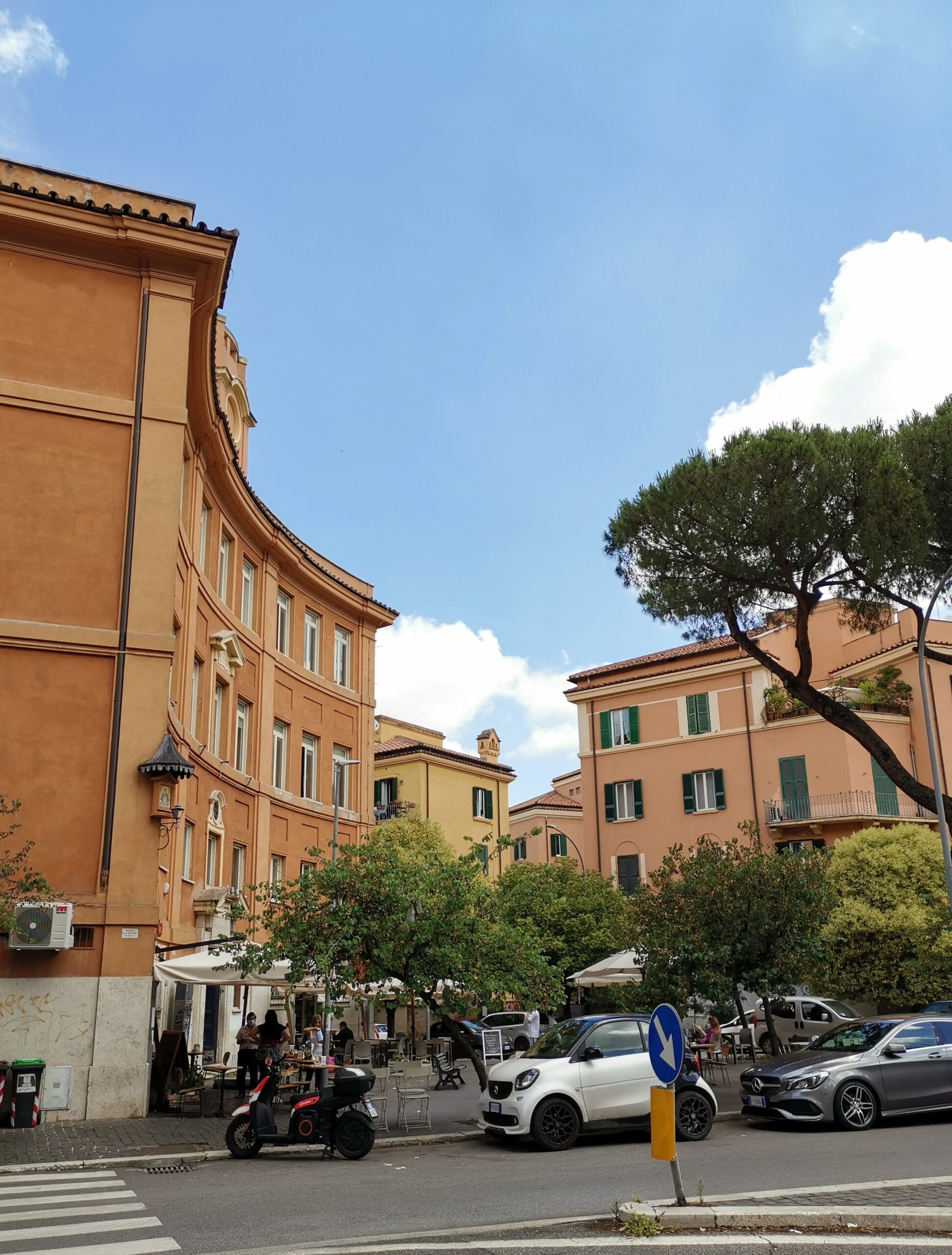
🌸 Garbatella: Rome’s Secret Garden That Lives in the Everyday
Rome can shout through its majestic monuments. Garbatella, however, speaks softly. Founded in 1920 as a garden city for workers, this neighborhood stays away from tourist circuits. It offers a sweeter Rome, with courtyards, string lights, and lively stairways.
📍 Geography and Connections
Garbatella lies south of Trastevere on the left bank of the Tiber. It connects to the Ostiense district through the modern Ponte Settimia Spizzichino, which leads directly to the Basilica of San Paolo fuori le Mura. In addition, the Garbatella metro station (Line B) is only a short walk from the bridge. It links the neighborhood to the center of Rome in minutes.
🏡 Courtyards and Architecture
Among the lotti—housing blocks grouped around shared courtyards—you can see the charm of Barocchetto Romano. There are exterior staircases, simple arches, balconies with flowers, and decorative details that turn popular housing into urban poetry. Garbatella was designed as a garden city, and it still preserves a warm and welcoming atmosphere.
🕰️ History and Origins
Garbatella was founded in 1920 as a working-class neighborhood. It was built for railway and dock workers employed in the nearby Ostiense industrial area. However, under Mussolini’s fascist regime, it also became a forced refuge. Entire families were evicted from central districts when the dictator ordered the creation of monumental avenues such as the Via dei Fori Imperiali and the Via della Conciliazione.
Rome was not always as we see it today. Those grand avenues, now part of the cityscape, were built after demolishing medieval homes where thousands of people once lived. As a result, many displaced families were relocated to Garbatella and other peripheral districts.
This is perhaps why the neighborhood has such a unique soul. It is a mix of workers proud of their trade and families expelled from the center who had to rebuild their lives in community.
The name of the district carries its own mystery. Some say it comes from a kind innkeeper—called the “garbata ostella” (the “courteous hostess”). Others link it to vineyards once cultivated a garbata. In any case, the name resonates as a perfect play on words: Garbatella, both graceful and beautiful.
⛪ Churches and Everyday Spirituality
The Church of San Francesco Saverio was the site of John Paul II’s first pastoral visit as pope in December 1978. It was a moment full of emotion due to his youthful ties with the parish. Meanwhile, the nearby San Filippo Neri in Eurosia recalls the presence of the Oratorians and the simple, communal spirit of faith in this neighborhood.
When evening comes, Via delle Sette Chiese lights up with string garlands. They invite visitors to walk slowly, as if every corner wanted to share its own story.
🌳 Piazza Giardino Monsignor Desiderio Nobels
One of the places where true Garbatella unfolds is the Piazza Giardino Monsignor Desiderio Nobels. Here stand the church of San Filippo Neri and the Cesare Baronio school, whose students bring youthful energy to the square.
Beneath the majestic stone pines, daily life becomes a spectacle. Neighbors drink from the nasone fountain, children run out of school, and at midday employees from the Regione Lazio cross to small restaurants for lunch. Moreover, every scene is filled with laughter and simple dishes.
Every second Sunday of the month, the square takes on a festive air. A local fair brings porchetta, cheeses, craft beers, and fresh products. Music and lively conversations fill the air.
🚶 Walking Through Garbatella
Garbatella is not limited to one square. It is walking its steep streets, climbing stairways, and stopping at corners where the neighborhood breathes. In fact, walking through Garbatella is the best way to feel Rome differently: intimate, everyday, and deeply authentic.
✨ Garbatella is a subestimated, almost secret quartiere. Those who discover it understand its magic. Here the Eternal City feels more human—made of glowing string lights, lively squares, cafés under the pines, and the quiet voice of a Rome that can only be heard in silence.
